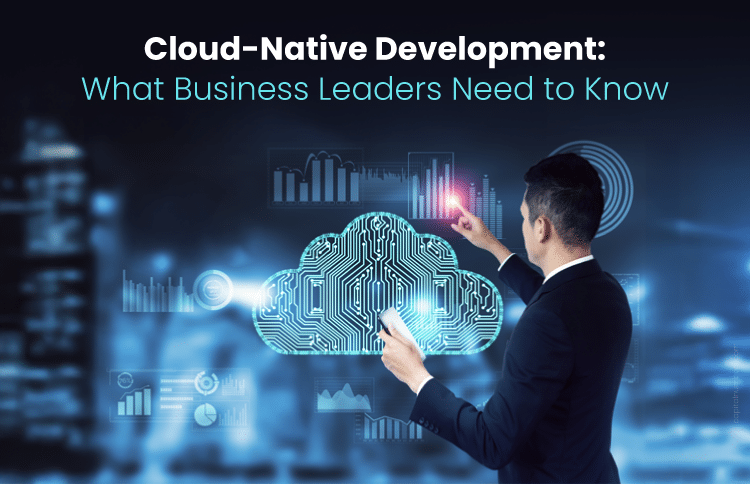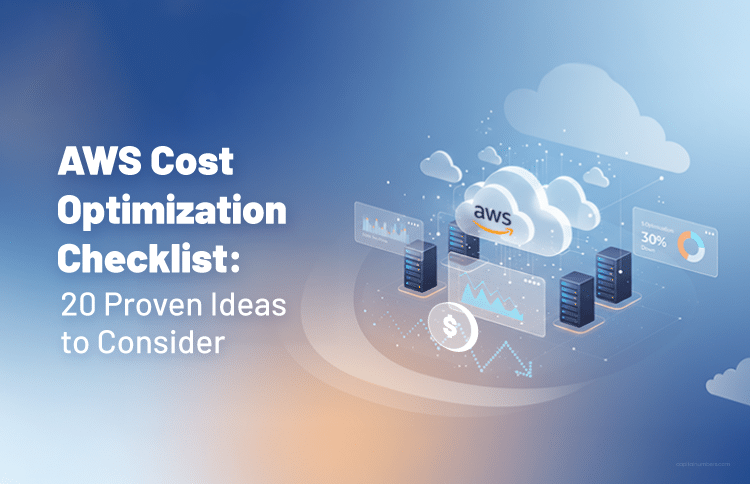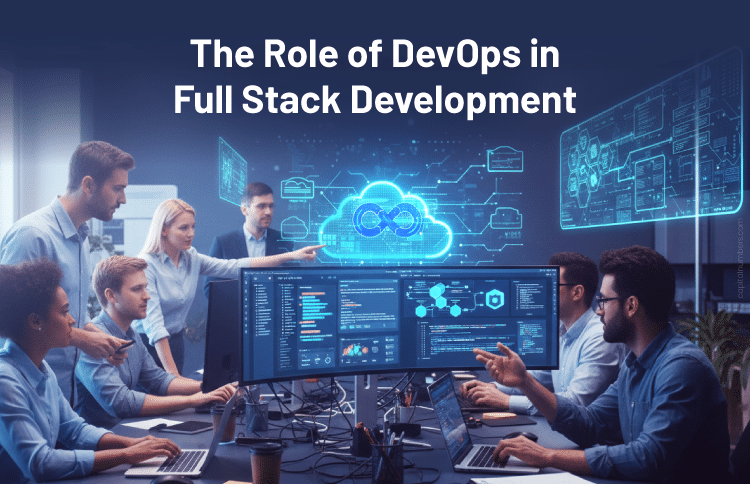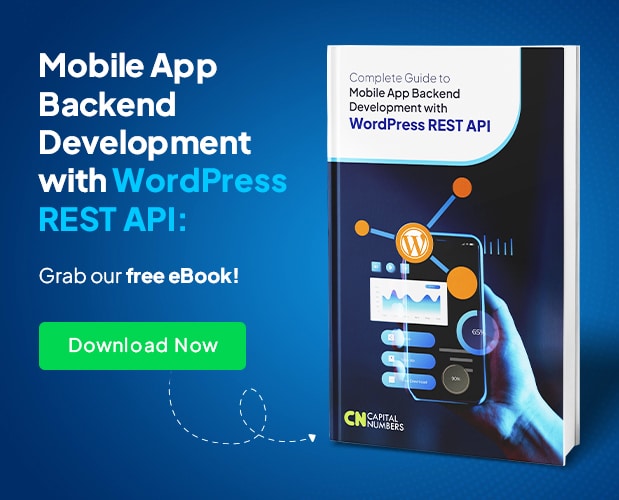Cloud-Native Development: What Business Leaders Need to Know
Table of Contents
Imagine your business as a race car. You’ve got big dreams, a talented team, and a clear track ahead. But if your engine’s outdated, you’re stuck in the slow lane while competitors zip by. That’s what it feels like when your tech can’t keep up with your ambition. Slow apps, constant crashes, and endless IT headaches can tank customer trust and drain your budget.
Enter cloud-native development – a turbocharged approach to building apps that’s fast, flexible, and built for today’s digital world.
In this article, I’ll walk you through what cloud-native development is, why it’s a game-changer for your business, and how to make it work without needing a PhD in tech. From real-world success stories to practical tips and future trends, this post has everything business leaders need to stay ahead.
What Is Cloud-Native Development, Anyway?
Let’s break it down. Cloud-native development means designing applications specifically to run in the cloud from the ground up. Think of it like building a sleek yacht for the open sea instead of dragging a rowboat onto the water – it’s made for the environment.
Instead of adapting old software, you build apps that take full advantage of cloud features like:
- Elastic scalability (automatically adjusting resources based on demand)
- Fault tolerance (staying online even if parts of the system fail)
- Continuous updates (rolling out new features without downtime)
Key Pillars of Cloud-Native Development:
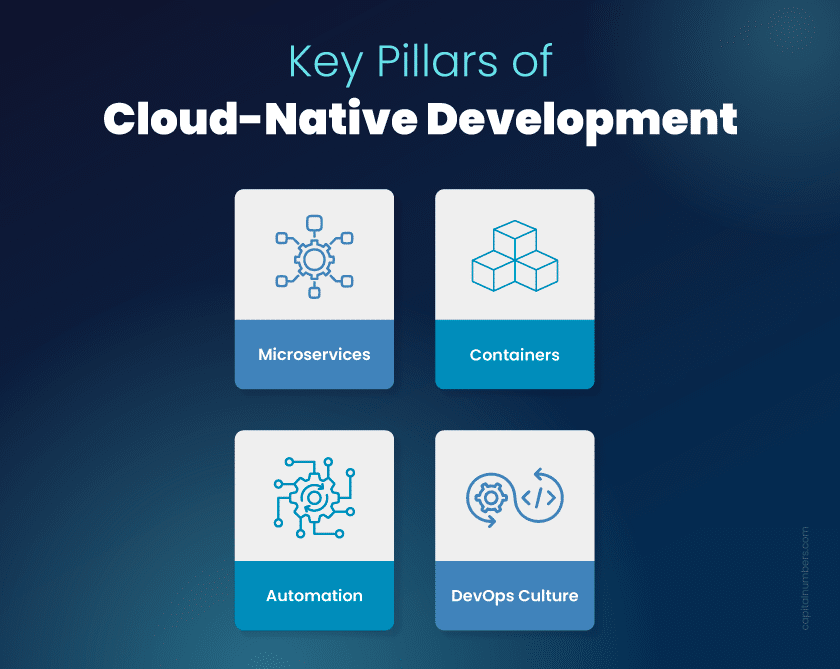
- Microservices: Instead of one big, clunky app, you build small, independent pieces using a microservices architecture that work together – like Lego blocks. If one piece fails, you fix it without touching the rest.
- Containers: Containerization packages your app’s code into portable units that can run consistently anywhere-from your laptop to large cloud servers.
- Automation: Smart tools handle boring tasks like scaling, updating, and fixing issues, so your team can focus on creating cool features.
- DevOps Culture: Developers and operations folks team up like peanut butter and jelly, working together to ship apps faster and better.
Why does this matter? Because cloud-native lets your business move at lightning speed, save cash, and keep customers happy. Now, let’s explore each of these in detail.
1. Microservices: Breaking Down the Monolith
The Problem with Traditional Apps (Monolithic Architecture)
Old-school apps are like a giant Jenga tower – one wrong move, and the whole thing collapses. If one feature fails, the entire app can go down. Updates are slow, scaling is hard, and innovation gets stuck in bureaucracy.
How Microservices Fix This
Microservices split your app into small, independent services (e.g., user authentication, payment processing, inventory management). Each service:
- Runs its own process
- Can be developed, deployed, and scaled independently
- Communicates via APIs
Business Benefits:
- Faster updates (no need to redeploy the whole app)
- Easier scaling (only scale the parts under heavy load)
- More resilient (one failing service doesn’t crash everything)
Example: Netflix uses microservices to handle millions of streams without interruption. If the recommendation engine fails, you can still watch videos – just with generic suggestions.
2. Containers: The Secret to Consistent Deployments
Ever had the “it works on my machine” problem? Containers solve that.
What Are Containers?
Think of containers like shipping containers for software. They package an app’s code, libraries, and dependencies into a single, portable unit that runs the same way everywhere – whether on a developer’s laptop or a cloud server.
Docker is the most popular container platform, but Kubernetes (an orchestration tool) manages large-scale container deployments.
Business Benefits:
- No more “works on my machine” headaches
- Faster deployments (spin up identical environments in seconds)
- Efficient resource usage (multiple containers can run on one server)
3. DevOps & CI/CD: Speed Without Sacrificing Quality
What Is DevOps?
DevOps is a culture + set of practices that bridges the gap between developers (who write code) and operations (who run it). The goal? Faster releases with fewer errors.
CI/CD: The Automation Powerhouse
- Continuous Integration (CI) – Developers merge code changes frequently, with automated tests catching bugs early.
- Continuous Delivery (CD) – Code is automatically deployed to production (or staged for release).
Business Benefits:
- Faster time-to-market (updates in hours, not months)
- Fewer bugs (automated testing catches issues before users do)
- Happier teams (less firefighting, more innovation)
4. Serverless Computing: Focus on Code, Not Servers
What Is Serverless?
Despite the name, servers do exist – you just don’t manage them. With serverless computing (e.g., AWS Lambda, Azure Functions), you upload code, and the cloud provider runs it only when needed.
Example: A food delivery app could use serverless to process payments only when an order is placed – saving costs compared to running a server 24/7.
Business Benefits:
- Cost-effective (pay only for execution time)
- Auto-scaling (no capacity planning needed)
- Less maintenance (no server patches or upgrades)
You May Also Read: Accelerating Software Delivery: DevOps Best Practices for CTOs
Why Cloud-Native Is a Big Deal for Your Business
You’re not running a tech company? No problem. Cloud-native development solves real-world business problems, whether you’re in retail, healthcare, or finance. Here’s why it’s worth your attention:
1. Launch New Ideas Faster
In today’s market, speed is everything. Cloud-native apps let you roll out new features in days, not months. Imagine you run a retail business and want to add a “buy now, pay later” option to your app. With cloud-native, your team can build, test, and launch it quickly, beating competitors to the punch. Customers love it, and you’re the hero.
2. Save Money Without Sacrificing Quality
Cloud-native apps are like energy-efficient appliances – they use only what they need. You pay for cloud resources as you go, so you’re not stuck with expensive servers sitting idle. Automation also cuts down on manual IT work, meaning fewer people (and dollars) spent on maintenance.
3. Keep Customers Smiling
Ever had an app crash during a big sale? It’s like a restaurant running out of food on opening night. Cloud-native apps are built to handle crazy traffic spikes – like Black Friday shopping surges – without breaking a sweat. They’re also easy to update without downtime, so customers get new features seamlessly. Happy customers stick around, and that’s gold for your bottom line.
4. Stay Ready for Anything
Markets shift fast. One day it’s all about e-commerce; the next, it’s AI-powered chatbots. Cloud-native apps are flexible, letting you add new tech or expand to new regions without a complete overhaul. It’s like having a Swiss Army knife instead of a single-use tool – your business can pivot whenever it needs to.
5. Boost Team Morale
Let’s not forget your people. Cloud-native tools make developers’ lives easier by automating repetitive tasks and streamlining workflows. When your team spends less time fighting fires and more time building cool stuff, they’re happier and more productive. A motivated tech team is a secret weapon for any business.
Cloud-Native vs. Traditional Development: A Head-to-Head
To really get why cloud-native rocks, let’s compare it to the old-school way of building apps. Here’s a quick breakdown:
| Aspect | Traditional Development | Cloud-Native Development |
|---|---|---|
| Structure | Monolithic (one big, rigid app) | Microservices (small, modular pieces) |
| Scalability | Slow, needs new hardware | Automatic, scales with demand |
| Updates | Painful, often requires downtime | Fast, seamless, no interruptions |
| Cost | High upfront costs for servers | Pay-as-you-go, lower long-term costs |
| Resilience | One failure can crash everything | Self-healing, keeps running despite issues |
| Speed to Market | Months to years | Days to weeks |
In short, traditional development is like driving a horse-drawn carriage – slow and creaky. Cloud-native is a highspeed car – fast, smart, and ready for the future.
How to Make Cloud-Native Work for Your Business
Okay, you’re sold on cloud-native. But where do you start? Don’t worry – I’ve got a roadmap to keep things simple and stress-free:
1. Start Small, Dream Big
Don’t try to rebuild your entire tech stack overnight. Pick one project to test cloud-native, like a customer-facing app or an internal tool. For example, a healthcare company can move their patient portal to a cloud-native setup first. Once they see faster load times and happier users, which will give them confidence to tackle bigger projects.
2. Build the Right Team
Cloud-native needs skilled people who know tools like Kubernetes (for managing containers) and CI/CD pipelines (for automating updates). If your team’s new to this, invest in training or hire a few experts. You can also partner with cloud providers like AWS, Azure, or Google Cloud, who offer hands-on support. Think of it like hiring a personal trainer – you’ll get to your goals faster with guidance.
3. Foster a DevOps Culture
Cloud-native thrives when your tech and business teams work as one. Encourage collaboration through regular check-ins and shared goals. For instance, have your developers sit in on customer feedback sessions to understand what users want. This “DevOps mindset” is like a great band – everyone plays their part, but the music’s better together.
4. Make Security Non-Negotiable
The cloud’s awesome, but it’s not a fortress. Hackers love targeting apps, so build security into every step. Encrypt data, use automated threat detection, and run regular audits. It’s like locking your house and setting the alarm – you want multiple layers of protection. A financial firm I know avoided a major breach by embedding security early in their cloud-native journey.
5. Track Progress and Celebrate Wins
Use metrics to measure success, like app performance, customer retention, or development speed. If your e-commerce app’s checkout time drops by 50% after going cloud-native, that’s a win worth shouting about. Share these victories with your team to keep momentum high, and use the data to fine-tune your approach.
6. Plan for Change Management
Shifting to cloud-native can feel like moving to a new city – exciting but disorienting. Prepare your team for the transition with clear communication and training. Explain why you’re making the change (e.g., faster apps, lower costs) and how it benefits everyone. A retail chain we advised ran workshops to get their non-tech staff on board, which made the switch smoother.
Real-World Success Stories: Cloud-Native in Action
Need proof cloud-native delivers? Check out these companies killing it:
- Netflix: The streaming king uses cloud-native to serve millions of viewers worldwide. When a hit show like Squid Game drops, their apps scale instantly to handle the traffic, with zero crashes. Their microservices setup also lets them test new features (like interactive shows) without risking the whole platform.
- Capital One: This bank went cloud-native to speed up everything from fraud detection to credit approvals. Using AWS, they process millions of transactions daily, saving time and keeping customers secure. Their developers now push updates weekly instead of quarterly.
- Etsy: The online marketplace uses cloud-native to stay nimble. During holiday shopping peaks, their apps scale to handle huge traffic surges. They also use automation to roll out hundreds of updates daily, keeping the platform fresh and user-friendly.
- DISH Network: This telecom giant cut their app release cycle from four months to two weeks using cloud-native. Their customers get new features faster, and their team spends less time on manual fixes.
These stories show cloud-native isn’t just hype – it’s a proven way to win.
Challenges and How to Overcome Them
Let’s keep it real: cloud-native isn’t all sunshine and rainbows. Here are some common hurdles and how to jump them:
- It’s Complicated: Microservices and containers can feel like herding cats.
Solution: Use tools like Kubernetes to simplify management, and start with a small project to build skills. - Learning Curve: Your team might need time to master new tech.
Solution: Offer training, hire specialists, or work with a cloud provider for support. - Security Risks: The cloud can be a hacker’s playground.
Solution: Embed security from the start with encryption, multi-factor authentication, and regular audits. - Cost Creep: Cloud bills can sneak up if you’re not careful.
Solution: Set budgets, use cost-monitoring tools, and optimize resource usage (e.g., shut down unused servers). - Cultural Resistance: Some teams fear change.
Solution: Communicate the benefits clearly, involve everyone in the process, and celebrate early wins to build buy-in.
By tackling these upfront, you’ll save headaches and set yourself up for success.
The Future of Cloud-Native: What’s Coming Next
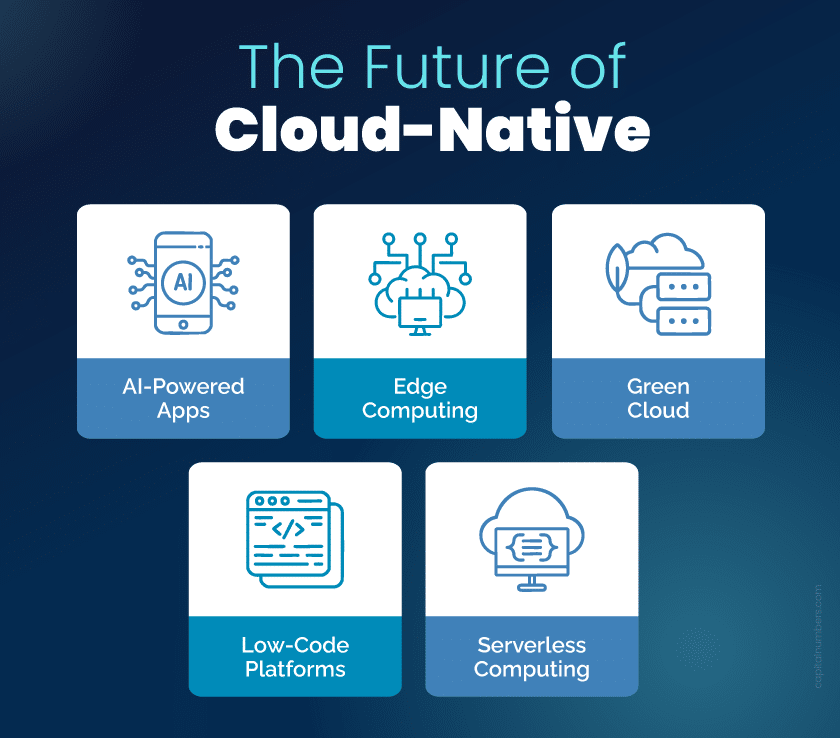
Cloud-native is evolving faster than fashion trends. Here’s what’s on the horizon and how it could shape your business:
- AI-Powered Apps: Cloud-native is perfect for weaving in AI, like chatbots that learn from customers or analytics that predict sales. For e.g. A grocery chain can use cloud-native to add AI-driven inventory forecasts, cutting waste by 20%.
- Edge Computing: This brings cloud power closer to users, making apps lightning-fast. Think self-driving cars or smart factories that process data on the spot. It’s like having a mini-cloud in your pocket.
- Green Cloud: Companies are going eco-friendly, using renewable energy for cloud data centers. This cuts your carbon footprint and looks great to customers. Google Cloud, for example, aims to be carbon-neutral by 2030.
- Low-Code Platforms: These let non-techies build cloud-native apps with drag-and-drop tools. It’s like giving your marketing team a magic wand to create apps without coding.
- Serverless Computing: Serverless computing takes automation to the next level, letting you run apps without managing servers. It’s like renting a car only when you need to drive – super efficient.
Keep an eye on these trends, and don’t be afraid to experiment. The businesses that thrive are the ones that stay curious.
How to Choose the Right Cloud-Native Tools
Not all cloud-native tools are created equal. Here’s a quick guide to picking the best ones for your business:
- Cloud Providers: AWS, Azure, and Google Cloud are the big players. AWS is great for flexibility, Azure shines for Microsoft users, and Google Cloud excels in AI. Pick based on your needs and existing tech.
- Container Tools: Kubernetes is the gold standard for managing containers, but Docker is simpler for beginners. Start with Docker if you’re new, then graduate to Kubernetes.
- CI/CD Platforms: Tools like Jenkins, GitLab, or CircleCI automate updates. Choose one that fits your team’s workflow and budget.
- Monitoring Tools: Datadog, Prometheus, or New Relic track app performance. These are like fitness trackers for your apps – use them to spot issues early.
Don’t overthink it – start with one or two tools, test them, and scale from there. A manufacturing company began with AWS and Docker, then added Kubernetes as they grew.
You May Also Read: AWS vs Azure vs Google Cloud Platform: A Detailed Comparison
Why Now Is the Time to Go Cloud-Native
Still on the fence? Here’s the deal: the world’s moving faster every day. Customers expect apps that are instant, reliable, and packed with features. Competitors are already adopting cloud-native to cut costs and outpace you. And with trends like AI and edge computing heating up, waiting means falling behind. Going cloud-native now gives you a head start, letting you build a tech foundation that’s ready for whatever’s next.
Plus, the numbers don’t lie. Studies show cloud-native companies deploy updates 200x faster and recover from failures 24x quicker than traditional setups. That’s not just a nice-to-have – it’s a must-have in 2025.
Wrapping Up: Your Cloud-Native Journey Starts Here
Cloud-native development isn’t just for tech geeks – it’s your business’s ticket to staying fast, flexible, and customer-focused. By building apps that scale effortlessly, adapt to change, and recover from hiccups, you’re setting yourself up to win in a world where agility is king. Start small with one project, train your team, and lean on experts if you need them. Watch out for challenges like complexity and cost creep, but don’t let them scare you off – the rewards are worth it.
Ready to take the leap? Connect with our cloud-native experts today for a free consultation. Let’s design a custom roadmap to accelerate your digital transformation and future-proof your business. Your technology deserves to be as ambitious as you are. Let’s make it happen!

